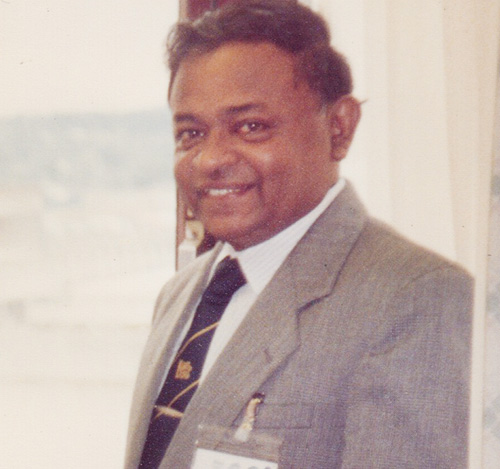OPINION
Engineer D. G. D. C. Wijeratne: Reformist who made renewable energy possible

Wijeratne
Well before the present-day guardians of renewable energy learned their trade, at a time when many rejected renewable energy as “useless”, there were several persons who had a vision and worked on the subject from within the state apparatus. DC, as he was affectionately known (not to be confused with direct current, for he was an electrical engineer) among colleagues and friends, was certainly the star of his time.
D G D C Wijeratne BSc Eng, MEng, CEng, FIE (Sri Lanka), FIET(UK) passed away on 11th May 2023, after a fruitful 79 years. His family, colleagues and friends gathered in large numbers to general cemetery Kanatte on 13th May, to say goodbye to this accomplished electrical engineer.
Graduating from the University of Peradeniya at the age of 23, he joined the Department of Govt Electrical Undertakings in 1967. Two years later, the Department was converted to Ceylon Electricity Board (CEB). Rising through the ranks in CEB, he worked in hydropower generating stations and managed several projects to develop power distribution. His master’s degree in Systems Engineering from the Asian Institute of Technology certainly helped to shape-up his vision for the electricity sector.
The key person who helped break the barrier and enable private investments into renewable energy development was Engineer Wijeratne, then Additional General Manager in-charge of Planning at Ceylon Electricity Board (CEB).
He was the author of the then controversial booklet “Power Sector Policy Directions”, published by the Ministry of Power and Energy in 1992. This was the time Sri Lanka was ending the development of large reservoirs for hydropower production. The country was known to have another 350 locations for development of smaller hydropower units.
Under his leadership, for the first time in Sri Lanka and way ahead of almost all countries in south and south-east Asia and Africa, in 1996, Sri Lanka invited the private sector to invest on renewable energy. The offer was a technology-neutral (hydro, wind, solar were equally treated), standardised price (same price paid to all investors, no favoured parties) and a non-negotiable, publicly-disclosed agreement for the private investors to sell electricity to the grid. This allowed the flood gates to open with many private investors rushing into invest, initially in small hydro projects, and later in wind and ground mounted solar projects. Those principles and systems he pioneered, are still active today across 320 private renewable energy power generators now in operation, producing 750 megawatt, and growing.
And what is more? Unlike in any other agreement in any business, there are no penalties on private renewable energy suppliers for non-supply of electricity, or even for abandoning it after signing an agreement. Such were the most favourable conditions he negotiated and lobbied the government to facilitate entry of renewable energy use for electricity generation. By 2014, Sri Lanka achieved a 10% share of electricity produced from such renewable energy power plants, in addition to large hydropower.
DC was the most capable and accomplished engineer among his peers, with multiple capabilities extending beyond electrical engineering, specifically into information technology. In 1992, he was appointed Additional General Manager (Planning) and provided leadership to many new major power generation and transmission projects; Kelanitissa and Kerawalapitiya Combined Cycle, Norochcholai Coal, Upper Kotmale, Kukule, Broadlands, are some of the major power plant projects initiated during his time as head of planning, all of which were later built. “If this fails, the entire nation is in trouble”, said D.C. Wijeratne about the Norochcholai power plant (Sunday Times 16th November 1997). “We should go for coal-based power generation as there is no other way to provide power at low cost,” he said (Sunday Observer, 8 Dec 2002).
His commitment to public disclosure of what the electricity board was doing was exceptional: he attends all public discussions on power plant projects, sometimes ending with heated debates with traditional opponents of development projects. He readily agreed to the decision to publish the Power Generation Plan. He was emphatic: “let us make the power generation plan available to the public with all our calculations, for anyone to read, comment, give us a feedback and even criticise.” Since then to this date, it remains a public document.
In parallel, he held responsible positions in the Institution of Engineers (IESL) and was elected President in 1999. In 2002 he was appointed General Manager CEB. After a 2-year stint as General Manager of CEB, he retired in the year 2004.
The best tribute to this remarkable engineer of multiple talents and enormous drive, is to carry forward the good principles and engineering practices he established. His vision was for a well reformed electricity supply industry in which both the state and private sector have invested, with traditional and renewable energy blended, to provide a cost-effective electricity supply.
Eng Shavindranath Fernando and Eng (Dr) Tilak Siyambalapitiya
